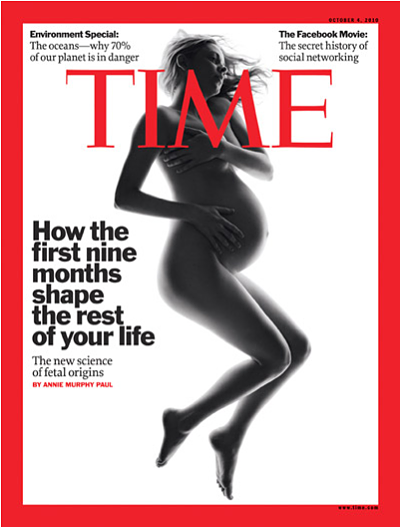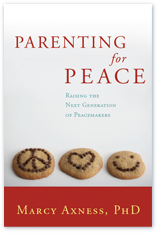 The brain development needed to equip an individual with the kinds of qualities needed for peace and prosperity — self-regulation, creative innovation, mental flexibility, robust will — begins during pregnancy, and it isn’t just diet and lifestyle choices that influence it. A pregnant woman’s thoughts and moods have a significant impact upon the brain development of her baby in the womb.
The brain development needed to equip an individual with the kinds of qualities needed for peace and prosperity — self-regulation, creative innovation, mental flexibility, robust will — begins during pregnancy, and it isn’t just diet and lifestyle choices that influence it. A pregnant woman’s thoughts and moods have a significant impact upon the brain development of her baby in the womb.
Stress in pregnancy is associated with a daunting list of bad outcomes, but some basic “perception hygiene” can help pregnant moms navigate this reality. While I’m confident that scientists will soon “prove” what so many wisdom traditions and cultures have long known about the role of joy in optimally prenatal development, what we do now know for sure is that a pregnant mother’s chronic stress has enduring negative effects upon the developing fetal brain.
The S Word
Fetal (and infant) exposure to the mother’s stress hormone cortisol — when it is chronic, severe and/or unremitting as opposed to the occasional doses that are part of normal life and development — can re-route the direction of an individual’s development in devastating, though often subtle and not immediately recognizable, ways. In my last post I focused on the role of a mother’s stress in the risk of premature birth.
I much prefer to light candles rather than curse the darkness, which is why in my book Parenting for Peace I zero in on what can go RIGHT in reproduction and parenting, rather than what can go WRONG. It pains me to catalog the truly staggering series of developmental problems that can be caused by significant maternal stress during pregnancy, and prefer to highlight what we can do about it. So I won’t do it here. (It’s in my book.) I just want to give you the big picture, because I find that sometimes the big picture can help free us from the little pictures that usually drive our stress!
Stress in Pregnancy Wires A Different Brain
 I often refer to pregnancy as “Nature’s Head Start program.” While we’re in the womb, our brain develops in direct response to our mother’s experience of the world. If a pregnant mother’s thoughts and emotions are persistently negative, if she is under unrelenting stress, the internal message — delivered to the developing baby — is, “It’s a dangerous world out there,” regardless of whether or not this is objectively true. The baby’s neural cells and nervous system adapt to prepare for the unsafe environment it perceives it is going to be born into.
I often refer to pregnancy as “Nature’s Head Start program.” While we’re in the womb, our brain develops in direct response to our mother’s experience of the world. If a pregnant mother’s thoughts and emotions are persistently negative, if she is under unrelenting stress, the internal message — delivered to the developing baby — is, “It’s a dangerous world out there,” regardless of whether or not this is objectively true. The baby’s neural cells and nervous system adapt to prepare for the unsafe environment it perceives it is going to be born into.
Chronic stress in pregnancy tends to sculpt a brain suited to survive in dangerous environments: short of attention, quick to react, with reduced impulse control, with a dampened capacity to feel calm and content. (What does this sound like? ADD maybe??) This makes for a temperamental baby, difficult to soothe and calm, a baby who is challenging to parent — and thus the seeds can be sown this early for parents and child to get stuck in a sad but common vicious cycle: dealing with the baby is frustrating for Mom and Dad; this generates a spectrum of strong feelings within them, which further triggers the baby’s heightened “antennae” for threat, makes him even more agitated, and may distance exhausted, exasperated parents from their baby.
How Does a Pregnant Mother Deal with Stress in Pregnancy?
This may sound a little daunting. And the last thing I want to do is to make a pregnant woman feel stressed over her stress! Realistically, it’s hard to avoid stress and upset 24/7 — and you would never want to. Healthy prenatal development relies upon the dynamics of the ebb and flow of reasonable levels of maternal stress levels that resolve in a timely way. And, we have to recognize that just the normal movement and activities of life fall into this category. (In other words, a stress-free life doesn’t exist, thank goodness.)
And when it comes to emotional, mental or psychological stress as in, “I’m stressed out,” there is a helpfully simple guideline found at the heart of Zen practice: Wanting something to be different than it is, is what causes stress. So the goal is not to eliminate every stressor, but to reorient ourselves so as to navigate the currents of life in ways that support optimal, growth-oriented development of the embryo and fetus.
A couple examples: imagine a pregnant account executive gets an email or text alerting her that she is expected to make an important presentation this afternoon despite the fact that her Powerpoint file just crashed. She will experience activation of her fight, flight or freeze response just like that of the Stone Age woman fleeing a deadly animal. But the modern woman doesn’t fight or flee, at least not physically; maybe she curses at the company’s computer guy, or tries vainly, full of exasperation, to reschedule the meeting.
(Some clinicians who work with trauma theorize that the act of fighting or running — or otherwise having the opportunity to act in a physical way to meet the threat — diffuses the destructive effects of a mobilization response that otherwise becomes essentially “frozen” in the nervous system.)
Two pregnant mothers in the exact same Powerpoint-crisis situation could send two completely different messages to the babies in their wombs, based upon their perceptions of and attitude about the experience — the story they tell themselves (either consciously or unconsciously) about what is happening and what it means. Perhaps, rather than stressing out and yelling at the IT person, another woman in that same situation will take a few deep breaths, close her eyes, put her hands on her belly with a reassuring message to her baby, “No worries, let’s figure out a good way around this.” Maybe she’ll even come to see what advantages there might be to making a more intimate presentation, without the distraction of Powerpoint slides.
Opportunities for this kind of perception hygiene abound in the course of daily life. Imagine two pregnant women in the same long line at the bank: one is annoyed at the delay, anxious over an appointment she’s going to be late for, her upset amplified by the fact that yet another teller just closed her window — How could she?! — while the other woman is calmly surrendering to the tide of present reality. Maybe she’s even able to tap into some appreciation for the opportunity to slow down for a moment (in this never-slow-down world) and tune in to her baby, “introducing” him or her in her imagination to the interesting array of people in line. By putting into perspective the fact that the people she has an appointment with will understand — or not — and that her wellbeing, and by extension her baby’s, is paramount, this mother is helping sculpt her baby’s brain for peace.
Prenatal Parenting for Peace
 Once you know these basic principles of prenatal development, you hold a powerful key to your child’s lifelong emotional health and wellbeing. Generation Peace parents are mindful of the unceasing question being asked by the baby in the womb — which is continually answered chemically and energetically via the mother’s thoughts, feelings and behaviors: Mommy, what kind of world am I coming into? If they understand that this basic question — and its nine months’ worth of answers — drives fundamental aspects of their baby’s brain development, they can begin to comprehend how important it is for the pregnant mother to feel safe and supported, to feel loved, to feel joy… at least most of the time…so their baby can arrive ready to love and learn, not struggle and resist!
Once you know these basic principles of prenatal development, you hold a powerful key to your child’s lifelong emotional health and wellbeing. Generation Peace parents are mindful of the unceasing question being asked by the baby in the womb — which is continually answered chemically and energetically via the mother’s thoughts, feelings and behaviors: Mommy, what kind of world am I coming into? If they understand that this basic question — and its nine months’ worth of answers — drives fundamental aspects of their baby’s brain development, they can begin to comprehend how important it is for the pregnant mother to feel safe and supported, to feel loved, to feel joy… at least most of the time…so their baby can arrive ready to love and learn, not struggle and resist!
It is also helpful to keep in mind that repeated, consistent, chronic circumstances shape prenatal development, not necessarily one-time or occasional situations. For instance, in the scenarios described above, if Mother #2 — typically the easy-going one who keeps things in healthy perspective — has an uncharacteristic meltdown one day, she hasn’t irreparably harmed her baby’s brain development! On the contrary, if that stress gets resolved in due time, and doesn’t become a protracted or chronic state of anxiety or depression, research hints that it may possibly even be constructive. (The fetus learns at the most basic level—as will the toddler, preschooler and teen in similar circumstances—that distressing things can happen and the world doesn’t fall apart: repair happens, Life can be trusted!)
Of paramount importance is a pregnant mother’s ongoing typical mental outlook and emotional tone: this is what becomes, for the baby, “normal.”
Joel Evans, author of The Whole Pregnancy Handbook, is a clinical professor of obstetrics, gynecology, and women’s health. He is a physician whose personal growth and professional path have led him to understand that the wonder and wisdom of the universe manifest in every pregnancy. Dr. Evans’ primary prescription for pregnant mothers has to do with perception hygiene:
If I was forced to reduce all of the important information I want to share with women as they think about pregnancy and motherhood to one recommendation, it would be to never lose sight of the power of intentionality. Through intention you can give your child the gift of feeling loved, desired and connected, a gift that easily overcomes whatever challenging circumstances arise that you feel prevent you from being the “perfect” mother. The paradox is that the “perfect mother” is the one who loves, desires and connects with her child, before, during and after pregnancy, regardless of the worldly circumstances in which mom and baby find themselves. That intention — the desire to nurture and simply do the best she can and surrender all self-doubt and criticism — is the most powerful force in the universe.
Images:
storyvillegirl, Creative Commons license
Time
Shardayyy, Creative Commons license
Tags: ADD, fetal brain development, pregnancy, prenatal epigenetics, stress


